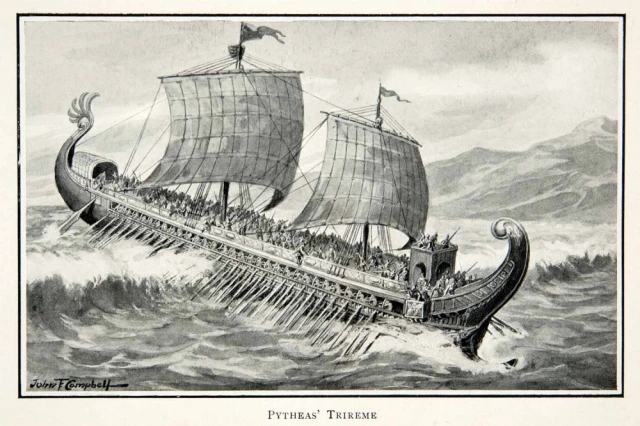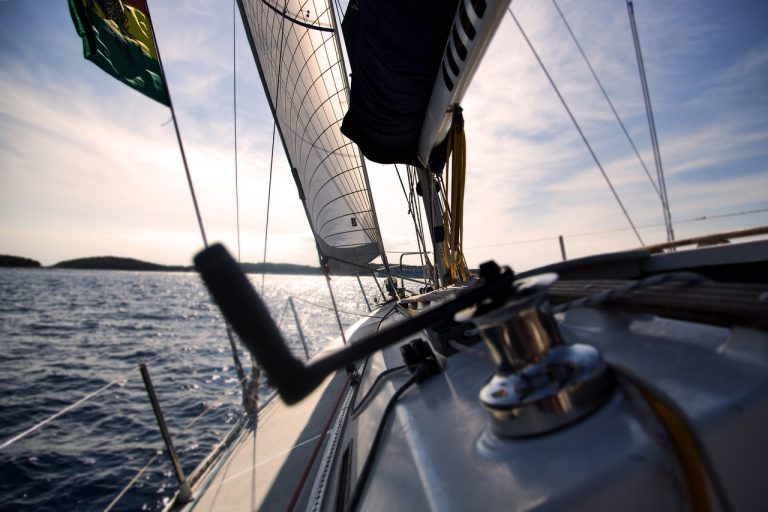A Greek sailing ship that goes by the name “Pytheas” with a Piraeus sailor as the sole crew, Giorgos Kesses, travels to accompany the French sailing ship “Belem” and the Olympic flame upon their entrance to Marseille, the old Greek colony and first French host city of the flame of the Paris Olympic Games.
The total time of the trip of Pytheas from Piraeus to Marseille is estimated to be about 20 days, taking into account that the trip will be made mainly using a sailboat, while the total distance from Piraeus to Marseille and return to Piraeus amounts to about 3000 nautical miles.
Giorgos Kesses departed on board of Pytheas at dawn, Saturday, April 20th, 2024, with the Greek flag and the flag of Piraeus.
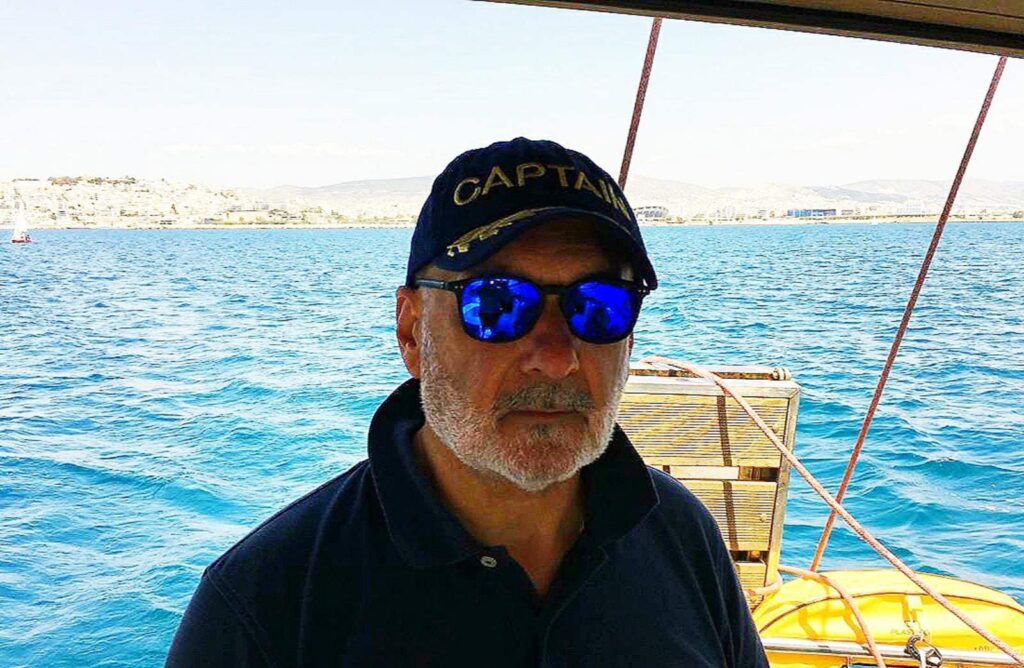
This trip is a lifelong dream for him, as he stated on Voice of Greece and the show “Fair Winds and Following Seas” with Antonis Karagiannakis, just 2 days before starting his big journey.
Born and raised in Piraeus and since he was a young child on boats, Giorgos Kesses does not forget those who helped him enter the wonderful world of sailing and thanks them all. “There are many who helped me in this great venture and want to remain anonymous”, he says. He also explains the peculiarities of the trip, the symbolism, the preparation, the many voluntaries, etc.
The departure will take place several days before the handover of the Olympic flame to France, as on April 26th, 2024, the “Belém” will sail from Piraeus and due to its size will travel on a much higher speed.
The boat will cross Argostoli, Kefalonia, and then cross the Adriatic to reach Reggio in Calabria. From there he will reach Bonifacio in Corsica, and later he will meet the French sailing ship “Belém” outside the port of Marseille, so that they can deliver together the Olympic Flame to the port of the twinned city with Piraeus.
It is noted that the municipalities of the two ports of Piraeus and Marseille have been twinned since 1984, symbolizing the strong bonds of friendship between the two port cities of the Mediterranean. In this spirit, the escort of the Olympic Flame under the Greek flag and the flag of the “sister city” of the Municipality of Piraeus to Marseille, a city founded by Greeks, is particularly important.
During the voyage, the Piraeus sailor seeks to park at a number of intermediate port stations, which have active Greek communities and are inextricably linked to Greek history and culture.
The purpose of this visit is to meet with the Greek communities there on the occasion of the Olympic Games and a tour of them, their archaeological material and monuments, related to their Greek early historical period.
“I will sail at dawn on Saturday, April 20th with the Greek flag and the flag of Piraeus. “PYTHEAS” is the first vessel to cross the Isthmus of Corinth, after the works done recently. I will cross to Argostoli in Kefalonia, then cross the Adriatic to reach Messina or Reggio in Calabria. From there I will reach Bonifacio in Corsica and later I will meet the French sailing ship “Belém” before reaching its final destination with the Olympic Flame and entering Marseille together”, says the Greek sailor.
Born and raised in Piraeus since he was a young child on boats, Giorgos Kesses does not forget those who helped him enter this wonderful world of sailing and thanks them all, while “there are many who helped me in this great venture and want to remain anonymous”, emphasizes the Piraeus sailor.
He also explained the peculiarities of the trip, the symbolism, the preparation, the many voluntaries, etc. Giorgos Kesses and “PYTHEAS” want to convey Greece and the Olympic event to his meetings with Greek expatriates.
Outside the port of Marseille, “Pytheas” will wait for the “Belem” and, accompanied by the armada of dozens of boats, enter with the Olympic Flame the port of the twinned city with Piraeus.
For the record, we should mention that the Municipalities of the two ports of Piraeus and Marseille have been twinned since 1984, symbolizing the strong bonds of friendship between the two port cities of the Mediterranean. In this spirit, the escort of the Olympic Flame under the Greek flag and the flag of the “sister city” of the Municipality of Piraeus to Marseille, a city founded by Greeks, is particularly important.
The total time of the trip from Piraeus to Marseille is estimated to be about 20 days, which takes into account the filling stations and any weather difficulties or damages. Under normal circumstances, it would be about 12 days. The time of return will be the same.
The distance from Piraeus to Marseille and the return to Piraeus, taking into account that the trip will be made mainly using sailing, totals about 3,000 nautical miles.
The departure will take place at least 10-12 days before the delivery of the Olympic flame to France, as on April 26th, 2024, the “Belém” will sail from Piraeus and due to its size will travel at a much higher speed.
Giorgos Kesses, sole captain of the sailing vessel “Pytheas”, arrives in Marseilles (audio interview) | 13 May 2024
13 Μay 2024
Giorgos Kesses has arrived at the port of Marseilles from Piraeus, after an arduous journey, full of experiences, unexpected incidents and difficulties. He excitedly shares with us the reception he received from the Greeks of the French port, the meetings planned after his arrival and the delivery of the flag of Piraeus to the Municipality of its sister city of Marseilles in the coming days.
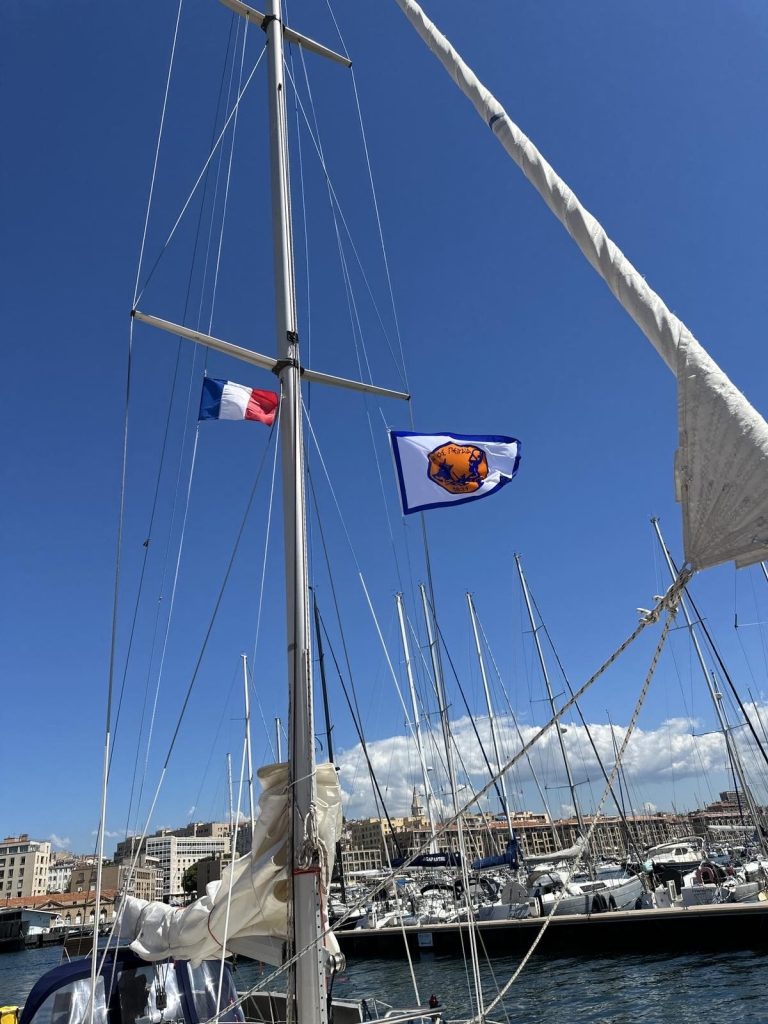
The ‘Olympic’ return trip of Pytheas
The ‘Olympic’ return trip of Pytheas to Piraeus will begin with the first stop in Nice and a reception by the Greek Community there on Thursday, May 16.
Arrival in Nice, Friday morning, May 17.
Upon arrival in Nice, the Governor of Pytheas will be greeted by the Mayor of Marseille, Mr. Benoit Payan, as well as by the Greek Minister of Foreign Relations of the French Government and responsible for the organization of the Olympic Games, Ms. Chrysoula Zacharopoulou.
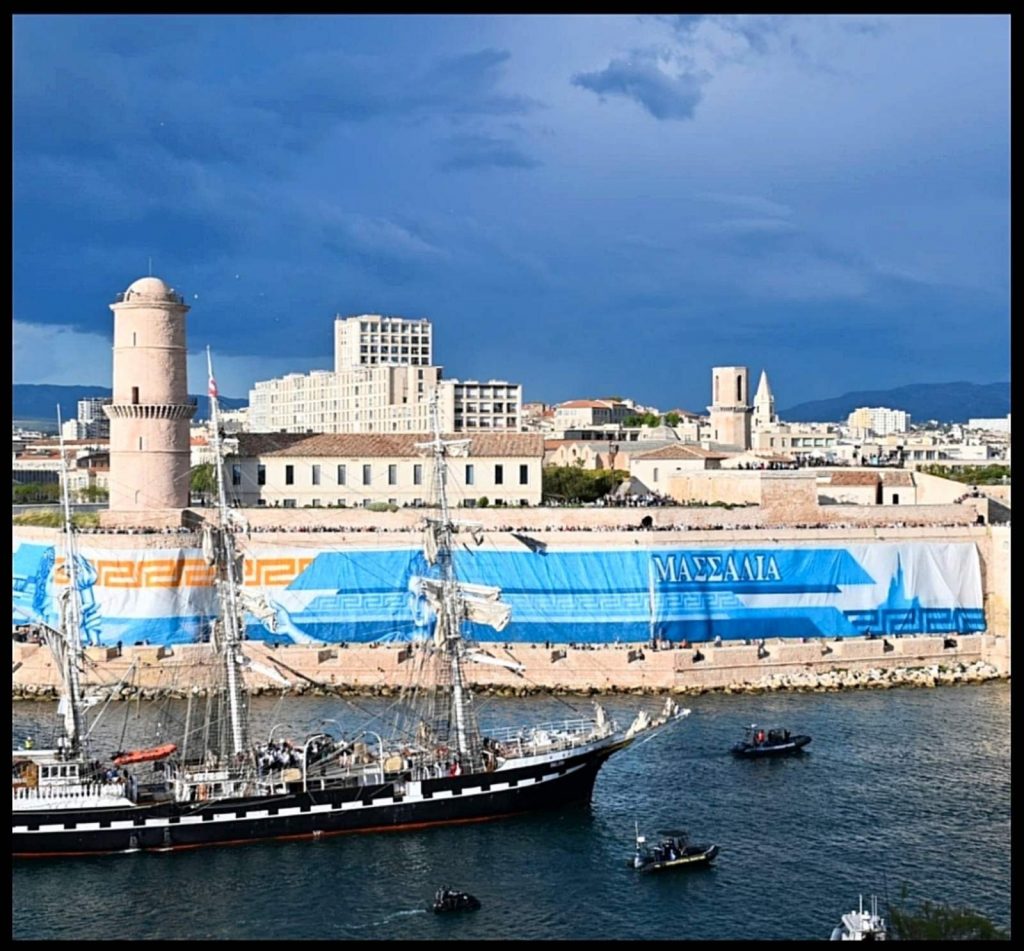
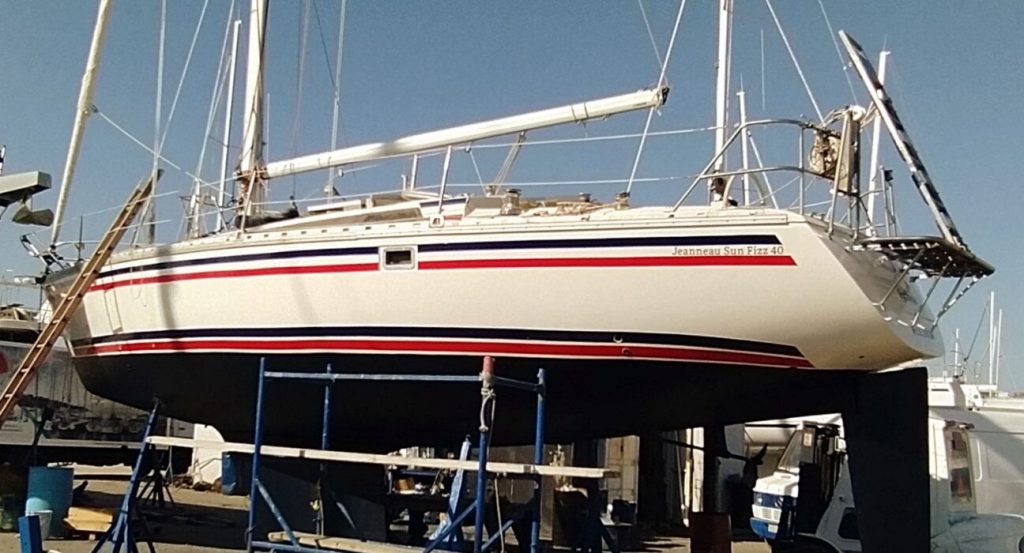
Pytheas: The vessel
“PYTHEAS” is the first vessel to cross the Isthmus of Corinth, after the works done recently. It is a French-built sailing boat of the JEANNEAU shipyard, model SUN FIZZ 40 and designed by Philippe Briand. As its exterior design suggests, Jeanneau Sun Fizz 40 is a performance cruiser. Jeanneau and Beneteau are known to produce boats with a good average, but it should be emphasized that in the opinion of the evaluators they have created the ultimate “diamond”, the Sun Fizz 40.
Despite its age, it retains its value to this day, as a result of superior construction and a solid reputation from a plethora of dedicated owners around the globe.
It is a wonderful sailing boat, which has large and flexible interiors and which successfully incorporated kevlar and teak wood as materials. It has traveled the world, crossing oceans and facing harsh weather conditions.
The boat is 12.3m long, 3.85m wide, weighs 7t. 300kg, draft 1.95m. and mast height 13.72m. It is equipped with a 50-horsepower Perkins inboard diesel engine. The fuel tank has a capacity of 150 liters and the freshwater tank 700 liters. It has 3 double cabins and two bathrooms.
Pytheas: The Greek explorer from Marseille

Navigator, geographer, astronomer and the first Greek to visit and describe the British Isles and the Atlantic coast of Europe. He flourished in 300 BC in Marseilles, Gaul. Although his main work “In the Ocean on the Ocean” has been lost, a part of his projects is known through the Greek historian Polybius.
Sailing from the Mediterranean Sea to the Atlantic, Pytheas stopped at the Phoenician city of Gades, probably following the European coastline to the tip of Brittany, and finally reached Belerium (“The Edge of the Earth” in Cornwall).
He also talked about Thule, the northernmost inhabited island, which is six days from northern Britain and extends at least into the Arctic Circle.
His scientific interests can be seen from his calculations made with a sundial on the summer solstice and from his notes of the days that lengthened as he traveled northward. He also noticed that Polaris is not at the true pole and that the Moon influences the tides.
